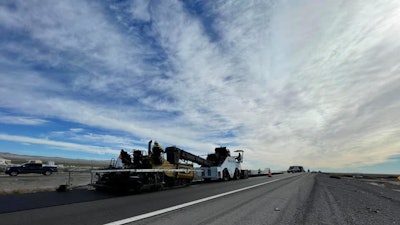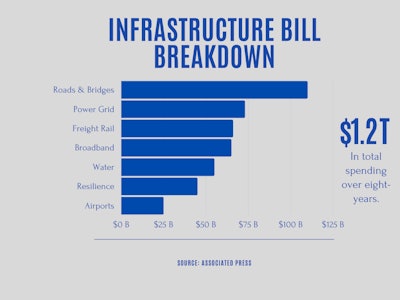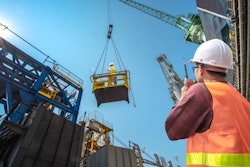
In the nearly four months since President Joe Biden signed the Infrastructure Investment & Jobs Act (IIJA), Americans haven't seen much progress come from the $1.2 trillion legislation.
The IIJA guarantees at least $850 billion of spending over the next five years. There's $55 billion to help communities remove lead pipes and deliver clean drinking water, $65 billion to expand broadband internet service and make it more affordable, and another $65 billion to upgrade the nation's power grid. Many federal agencies are involved, but Pete Buttigieg's Department of Transportation will be the largest recipient of funds, distributing more than $560 billion over five years to improve everything from tunnels, bridges, and roads to mass transit, ports, and airports.
This week, Transportation Secretary Pete Buttigieg, who is overseeing one of the most significant investments in America's bridges, roads, and rails in more than half a century, sat down with 60 Minutes to discuss the bill and what the nation can expect to see, and when they can expect to see it.
"One of the first things you're gonna notice is accelerated work on roads and bridges," Buttigieg told Anderson Cooper on 60 Minutes. "Not just the big, famous bridges in our biggest cities. This is thousands of bridges around the country."
And that's important with 42% of America's bridges being at least 50 years old, and more than 7% are considered "structurally deficient." But Buttigieg says in many cases, it's too early to know exactly which projects will be funded under the IIJA. That's because some of the money will be awarded by Buttigieg and his staff to communities that will compete for discretionary grants. But more money is being sent directly to the states, where governors and local leaders will decide how to spend it.
"There's always a bias toward the shiny, new thing," he says. "But the truth is, as a country, we've gotta take care of what we've got. The requirements aren't there (in the bill), but it's still a good idea. And we're still going to encourage it."
"You get what you pay for," Buttigieg says. "And for pretty much as long as I've been alive, our country has been under-investing in public things, for a long time-- everybody here in Washington said, "We gotta do this," or, "We're gonna do this," It's finally happened But we-- we got a lotta time to make up for. This is building a country, literally. And some of these things do take time. Each passing year you'll see more results, and it is gonna take a while."
A Refresher on the IIJA Breakdown
The federal government will distribute the $1.2 trillion in IIJA funds through new and existing programs. So far, more than $80 billion has been allocated to states for roads and highways, bridges, ports, airports and water systems, according to the release. Additional programs are being rolled out for high-speed internet, electric vehicle chargers and energy grid upgrades.
The White House has provided an overview of the new funding it contains:
- $110 billion for roads, bridges, and major transportation projects
- $66 billion for passenger rail, including $16 billion for Amtrak’s National Network, $6 billion for Amtrak’s Northeast Corridor, and $36 billion for Federal-State Partnership Grants including a $24 billion set-aside for the Northeast Corridor.
- $11 billion for safety for the National Highway Traffic Safety Administration, Federal Motor Carrier Safety Administration, Pipeline and Hazardous Material Safety Administration, and a “Safe Streets for All” program.
- $39 billion for transit, including for Capital Investment Grants and the “low-no” emission vehicle procurement program.
- $25 billion for airports.
- $17.3 billion for ports and waterways.
- $46 billion for infrastructure resiliency investments.
- $7.5 billion for low-carbon and zero-emission school buses and ferries along with another $7.5 billion for electric vehicles and low-carbon school buses and ferries.
- $65 billion for broadband, $55 billion for water infrastructure, along with $73 billion for power and electric grid infrastructure investment.




















